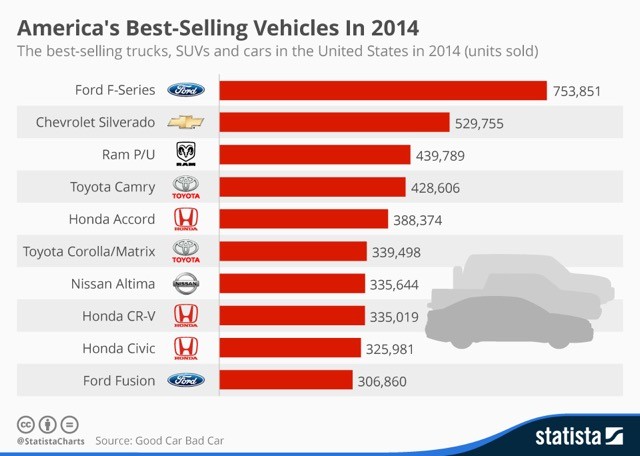Trucks are more than just transportation; they are powerful tools and reliable partners on every road, providing optimal transport solutions for individuals and businesses. When deciding to invest in a truck, carefully considering the decisive factors is crucial. This article, compiled by experts from Xe Tải Mỹ Đình, will give you a comprehensive overview of the key elements to help you make the most informed and suitable choice.
.jpeg)
 A truck driving on a highway
A truck driving on a highway
1. Determine Your Truck Usage Needs
The primary and most important factor when buying a truck is clearly defining your usage needs. What will you use the truck for? The intended purpose will determine the type of truck, size, load capacity, and necessary features.
- What goods will you transport?: What type of goods will you be transporting? Agricultural products, construction materials, consumer goods, or frozen goods? Each type of cargo will require a specialized truck bed and systems. For example, a box truck is suitable for perishable goods, a flatbed truck for construction materials, and a refrigerated truck for fresh food.
- Frequency and distance of transportation?: Will you be transporting goods frequently or occasionally? Will the transportation distance be mainly short trips within the city or long hauls between provinces? The frequency and distance of transportation will affect the choice of engine, fuel consumption, and truck durability.
- Operating terrain?: Will the truck primarily operate on flat terrain or hilly, rough roads? The operating terrain will determine the drive system (single or double axle), chassis, and suspension system of the truck.
Clearly answering these questions will help you narrow down your choices and focus on the truck models that best suit your actual needs.
2. Classify and Choose Truck Types
The current truck market is incredibly diverse with many segments and types. Understanding truck classifications will help you easily navigate and choose:
- Classification by Load Capacity:
- Light-duty trucks: Load capacity under 5 tons, suitable for transporting goods in cities and urban areas. Advantages include maneuverability, easy movement in narrow streets, and fuel efficiency.
- Medium-duty trucks: Load capacity from 5 to 15 tons, serving the need to transport medium and large goods on medium and long routes.
- Heavy-duty trucks: Load capacity over 15 tons, specializing in transporting oversized and overweight goods, often used in construction, mining, and long-distance transportation.
- Classification by Truck Bed Style:
- Flatbed trucks: Open bed, suitable for transporting construction materials and goods that do not require special preservation.
- Box trucks (Van trucks): Enclosed bed, protecting goods from weather and dust, suitable for transporting consumer goods, electronics, and garments.
- Tarpaulin trucks (Covered trucks): Bed with a frame and tarpaulin cover, flexible for carrying various types of goods, easy to load and unload.
- Special-purpose trucks: Dump trucks, tank trucks, refrigerated trucks, garbage trucks, etc., specifically designed for particular uses.
3. Engine and Operational Performance
The engine is the heart of the truck, determining its power, operational performance, and fuel consumption. When choosing an engine, pay attention to:
- Engine Type: Diesel engines are generally preferred for trucks due to their high torque, fuel efficiency, and durability. However, gasoline engines also have advantages in terms of cost and lower noise levels.
- Power and Torque: Power determines the maximum speed, and torque determines the ability to carry heavy loads and overcome terrain. Choose power and torque suitable for the load capacity and operating terrain.
- Emission Standards: There are increasingly strict regulations on emission standards, especially in major cities. Choose trucks that meet higher emission standards (Euro 4, Euro 5…) to protect the environment and avoid traffic restrictions.
- Transmission: Manual transmissions are common on trucks, providing a proactive driving feel and fuel efficiency. Automatic transmissions are becoming increasingly popular due to driving comfort in urban areas, but they are usually more expensive.
- Drive System: Single-axle trucks (rear-wheel drive) are suitable for flat roads, while double-axle trucks (4-wheel drive) are more powerful on rough terrain and hills but consume more fuel.
4. Safety Features and Equipment
Safety is always a top priority, especially for trucks that operate frequently on the road. Consider the following safety features:
- Braking System: ABS (Anti-lock Braking System), EBD (Electronic Brakeforce Distribution), disc brakes, exhaust brakes, etc., ensure safe and effective braking in all situations.
- Suspension System: A smooth suspension system helps reduce shocks, increase stability, and comfort for the driver and cargo.
- Lighting System: Halogen headlights, LED lights, fog lights, etc., ensure good visibility in low light conditions and bad weather.
- Driver Assistance Features: Rearview camera, reversing sensors, blind spot monitoring, hill start assist, etc., make driving safer and easier.
- Chassis and Body: A sturdy chassis and robust body ensure durability and protection in the event of a collision.
 Modern truck with advanced safety features
Modern truck with advanced safety features
5. Price and Operating Costs
The price of a truck is a significant investment, which needs to be carefully considered along with subsequent operating costs:
- Truck Price: Check prices from multiple dealerships, compare versions, equipment, and promotions to get the best price.
- Registration and Inspection Fees: Find out about the fees related to vehicle registration, inspection, road maintenance fees, etc.
- Fuel Costs: Estimate fuel consumption based on engine type, load capacity, and expected transportation distance.
- Maintenance and Repair Costs: Learn about periodic maintenance costs, replacement parts, and repair services for each truck brand.
- Insurance Costs: Choose a suitable insurance package to protect the truck and minimize financial risks.
Develop a detailed financial plan, calculate the total cost of ownership and operation of the truck in the long term to ensure affordability and investment efficiency.
6. Brand and Manufacturer Reputation
The brand and reputation of the manufacturer are important factors ensuring the quality, durability, and after-sales service of the truck. Choose reputable truck brands with a long history, trusted and highly rated by many users. Inquire about:
- Product Quality: Evaluate the quality, durability, and actual operational performance of truck models from that brand.
- Service Network: Ensure the manufacturer has a wide network of dealerships and service stations, convenient for maintenance, repair, and parts supply.
- Warranty Policy: Carefully review the warranty period, warranty conditions, and covered items for peace of mind when using the truck.
- User Reviews: Refer to opinions and reviews from people who have used trucks of that brand to get an objective and realistic perspective.
7. Financial Capability and Payment Methods
Finally, consider your financial capability and choose a suitable payment method:
- Cash Purchase: If you have sufficient funds, a cash purchase allows you to own the truck immediately and avoid interest charges.
- Installment Purchase (Financing): Installment purchases help reduce the initial financial burden, but you need to consider interest rates, loan terms, and monthly repayment ability. Explore truck financing packages from banks, finance companies, or dealerships.
- Truck Leasing: Truck leasing is a flexible solution for short-term or infrequent usage needs, helping save initial investment costs and costs associated with truck ownership.
 Various payment methods for purchasing a truck
Various payment methods for purchasing a truck
Conclusion
Deciding to buy a truck is an important step, significantly affecting your business operations and life. By carefully considering the decisive factors that Xe Tải Mỹ Đình has analyzed, you will have enough information and knowledge to choose the most satisfactory truck, maximizing your usage needs, bringing economic efficiency and peace of mind on every journey.
For more detailed advice and to update on the latest information about the truck market, please visit the Xe Tải Mỹ Đình website or contact our team of experts directly. We are always ready to accompany and support you on your path to developing a transportation career.
Frequently Asked Questions
-
Which truck brand is the best to buy?
There is no absolute answer to this question, as “best” depends on each person’s needs and priorities. However, some reputable and popular truck brands in Vietnam include: Hyundai, Isuzu, Hino, Thaco, Fuso… Research each brand and model carefully, compare pros and cons, and choose the most suitable one.
-
Is it better to buy a used truck or a new truck?
- New trucks: Advantages include guaranteed quality, new technology, fewer breakdowns, and good warranty policies. Disadvantages include higher prices and rapid depreciation in the early years.
- Used trucks: Advantages include lower prices, saving initial investment costs. Disadvantages include quality not being as guaranteed as new trucks, potentially encountering more repair and maintenance issues, and shorter lifespan.
Choosing a used or new truck depends on your budget, usage needs, and risk tolerance. If the budget is limited, a used truck may be an option, but you need to carefully check the quality of the truck before buying. If quality and durability are prioritized, a new truck is a better choice.

